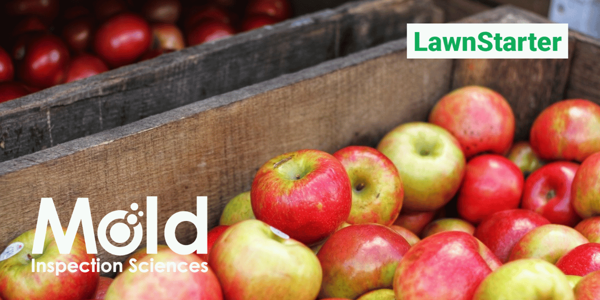The Battle Against Bugs: Integrated Pest Management for Mold Prevention
In the battle of bugs and mold prevention, you can arm yourself with natural and environmental methods. You would use chemicals and pesticides as a last resort. This is called Integrated Pest Management, and it’s a more natural way to get rid of pests and prevent mold.
What is Integrated Pest Management?
Integrated Pest Management (IPM) uses a common-sense approach to pest control to build new habits that make your home uninviting to pests without relying on harsh chemicals and pesticides. IPM programs only use a minimal amount of pesticides as a last resort. When pesticides are used, they are applied safely and responsibly to protect the health of the environment.
Integrated Pest Management can be used for the home and outdoors. Wherever pests occur, IPM can be practiced
The Relationship Between Pests and Mold

Similar to bugs, mold is a living organism that needs a food source to spread and thrive, like damp wood or leftover food. In fact, mold and pest infestations often coexist. Mold and pests are both attracted to moisture and prefer damp, humid areas like crawlspaces, basements, bathrooms, and kitchens.
Some pests find the scent of mold very attractive. Mold helps break down materials that bugs like to eat, making it easier for them to consume them, and some pests, like moths, also like to eat the mold itself. Additionally, termites love softer, moist wood, so if you have a mold problem, there’s a good chance you could also have a termite problem.

Our Mold and Environmental Investigative Services

IPM Strategies for Preventing Mold
Mold is attracted to moisture and humidity and grows wherever water collects. It can be identified by its musty smell and white, black, or pink colored stains.
The best way to prevent both mold and bugs is to repair leaks, remove excess moisture, and keep things as clean as possible. You can do this by following these strategies:
- Increase airflow by opening windows.
- Use the fans in your kitchen when you cook, wash dishes, or clean.
- Check that your stoves and dryers vent to the outside.
- Clean regularly.
- Regularly inspect your walls or windows for condensation.
- Clean roof gutters and air conditioning drip pans.
- Inspect for and immediately repair leaks.
- Place furniture a few inches away from the walls.
- Remove rugs and carpets from damp areas.
- Leave the door cracked when showering so steam (moisture) doesn’t build up in the bathroom.
How to Remove Existing Mold
It’s much easier to prevent mold than to remove it, but if you find visible mold in your home, you should eliminate it. Breathing in mold can cause allergic reactions, and some molds even create mycotoxins.
Check for mold on your ceilings and walls, behind furniture, around washing machines, under carpets and sinks, around pipes, and in your heating ducts. If you find any traces of mold, you should take action immediately. To protect yourself, wear a respirator mask, gloves, and long-sleeved clothing. Use a stiff brush or cleaning pad to scrub the mold from the surface with soap, water, or vinegar. Once you are finished, completely dry the area.
However, visible mold is a sign of a much bigger problem, so scrubbing away surface-level mold may not be enough. Likewise, a couple of ants or roaches here or there could signify a much larger problem behind the scenes. Scheduling a professional mold inspection with Mold Inspection Sciences or a professional exterminator can help you identify the type of mold or pests present in your home. They’ll determine the extent of the problem and lead you to the right path for remediation.





